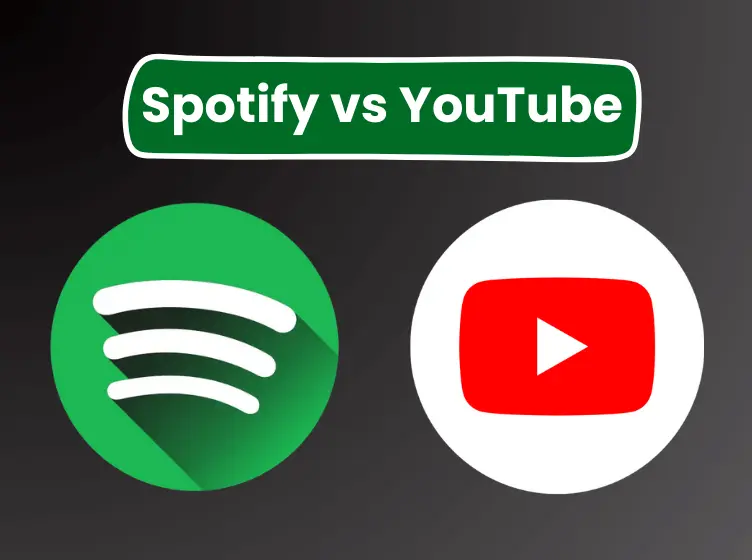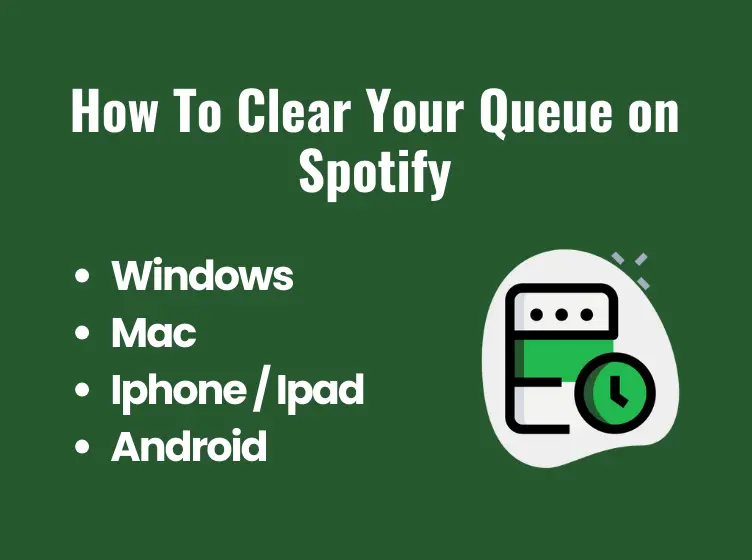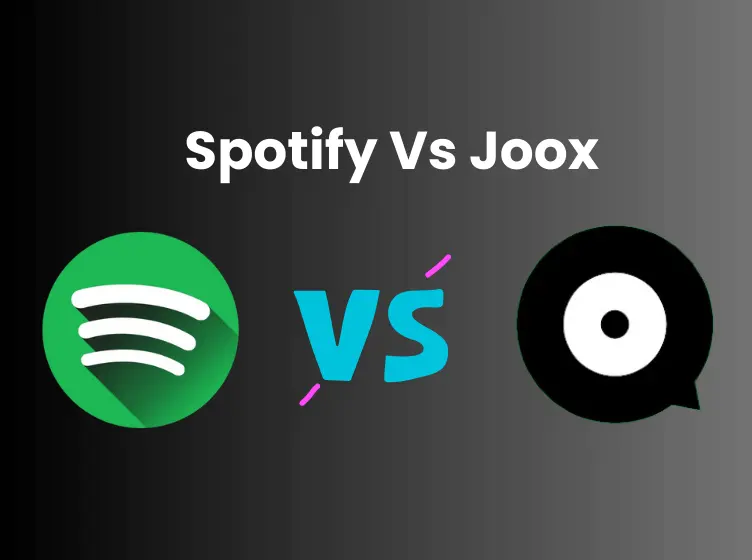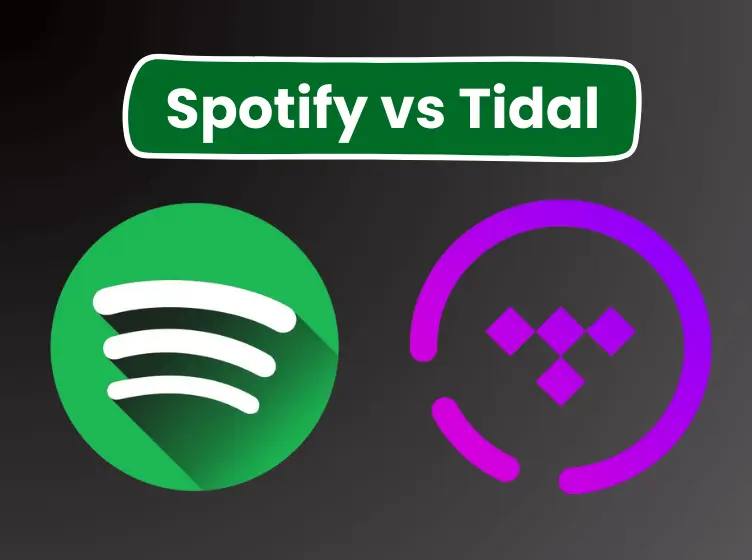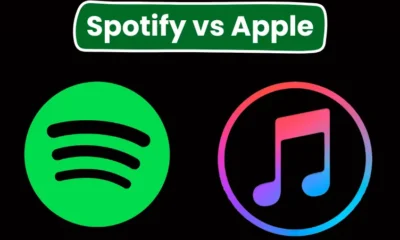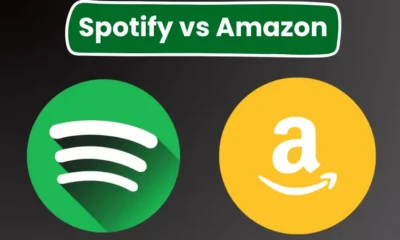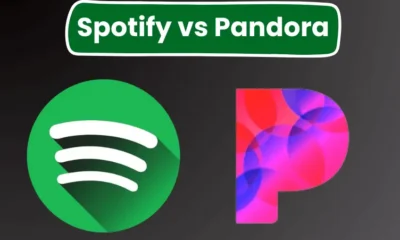Spotify VS YouTube
Like spotify and Deezer, the competition unfolds between Spotify’s algorithm-driven recommendations and versatile features and YouTube Music’s integration of video content and diverse user-generated uploads. As users navigate the realm of music streaming, the choice between Spotify vs YouTube Music hinges on preferences for curation, discovery, and visual content.
Content-Type:
Spotify primarily focuses on audio content and offers users a vast library of over 70 million tracks from various genres. Its strength lies in a comprehensive catalog of official music releases, curated playlists, and exclusive content. While some podcasts are integrated into the platform, Spotify is predominantly known for its music streaming services.
While YouTube music, as an extension of the YouTube platform, incorporates both audio and video content. In addition to official music tracks, it includes a vast array of music videos, user-generated content, and covers. This integration of visual content sets YouTube Music apart, creating a more immersive experience with the combination of audio with video.
User-Generated Content:
Spotify allows users to create and share playlists, the platform’s primary focus is on official content from artists and record labels. User-generated content is limited to playlists, and the platform’s primary strength lies in its algorithm-driven recommendations and curated playlists.
In contrast to spotify, YouTube Music thrives on user-generated content and offers a platform for independent artists, covers, and music videos created by users. The platform seamlessly integrates official releases with user-generated content and provides a more diverse and inclusive musical experience. This aspect caters to users who enjoy discovering unique and lesser-known content
Video Integration:
Spotify’s primary focus is on audio, and while some artists have incorporated visual elements into their profiles, the platform doesn’t emphasize video content. You can access music videos for select tracks, but the platform is not synonymous with video-based content.
On the other hand, video integration is a core feature of YouTube Music. You can watch music videos alongside their favorite tracks, offering a visual dimension to the listening experience. This integration appeals to users who enjoy the audio aspect and the accompanied visuals that enhance the overall music discovery and consumption process.
Discoverability and Recommendations:
Spotify excels in algorithm-driven music recommendations. Features like Discover Weekly and Release Radar use sophisticated algorithms to analyze your preferences and habits, and personalized playlists. The “Daily Mixes” and “Your Library” further contribute to a tailored user experience, making music discovery intuitive and personalized.
YouTube Music also utilizes algorithms for personalized recommendations, but both audio and video preferences influence its approach. The “Your Mix” playlist combines your history with recommended tracks, including music videos. The visual component in recommendations adds an extra layer to the discovery process, offering a more holistic approach to personalized curation.
Subscription Tiers:
Spotify offers a free, ad-supported tier with limitations and premium subscription plans. Premium plans include features such as offline listening, higher audio quality, and an ad-free experience. Spotify’s family plans allow multiple users to share one subscription, thus makes it cost-effective for households.
Similar to Spotify, YouTube Music provides both a free, ad-supported tier and premium subscription options. Premium plans offer additional features such as offline listening, background play, and an ad-free experience. YouTube Music’s family plans to cater to multiple users under a single subscription, aligning with Spotify’s subscription model.
Audio Quality of Spotify vs YouTube Music:
Spotify provides you with a range of audio quality options. The free tier offers standard-quality streaming, while premium plans allow for higher-quality streaming at up to 320 kbps. While Spotify emphasizes a balance between audio quality and data consumption, it does not offer a specific high-fidelity tier.
YouTube Music, like Spotify, offers a range of audio quality options. The free tier provides standard-quality streaming, while premium plans enable higher-quality streaming. However, YouTube Music also offers a premium tier known as YouTube Music Premium, which includes background play and offline listening.
Platform Integration:
Spotify excels in cross-platform compatibility, seamlessly integration with a wide array of devices and operating systems. It supports smartphones, tablets, computers, smart speakers, gaming consoles, and more. The Spotify Connect feature enables users to transition playback between devices seamlessly.
YouTube Music is closely integrated with the broader YouTube platform. It is accessible on various devices, like smartphones, tablets, and computers. The seamless integration with YouTube allows users to explore music within the same ecosystem where they consume other types of content, to create a unified experience.
Geographic Availability and Localization:
Spotify is available in numerous countries across the globe and makes it one of the most widely accessible music streaming platforms. The platform has also localized content and playlists, ensuring users can explore regional and culturally relevant music.
YouTube Music is available in many countries and provides widespread access to its music streaming services. Similar to Spotify, YouTube Music has localized content to cater to diverse audiences, ensuring a global but regionally relevant music experience.
Final Verdict: Spotify vs YouTube Music
Spotify and YouTube Music offer distinct approaches to music streaming and offer different preferences and usage patterns. Spotify excels in audio-focused content, algorithm-driven recommendations, and a vast library of official releases. In contrast, YouTube Music integrates both audio and video content, emphasizing user-generated content and providing a more immersive visual experience.
The choice between the two platforms ultimately depends on individual preferences, with users opting for Spotify’s audio-centric approach or YouTube Music’s multimedia integration.

